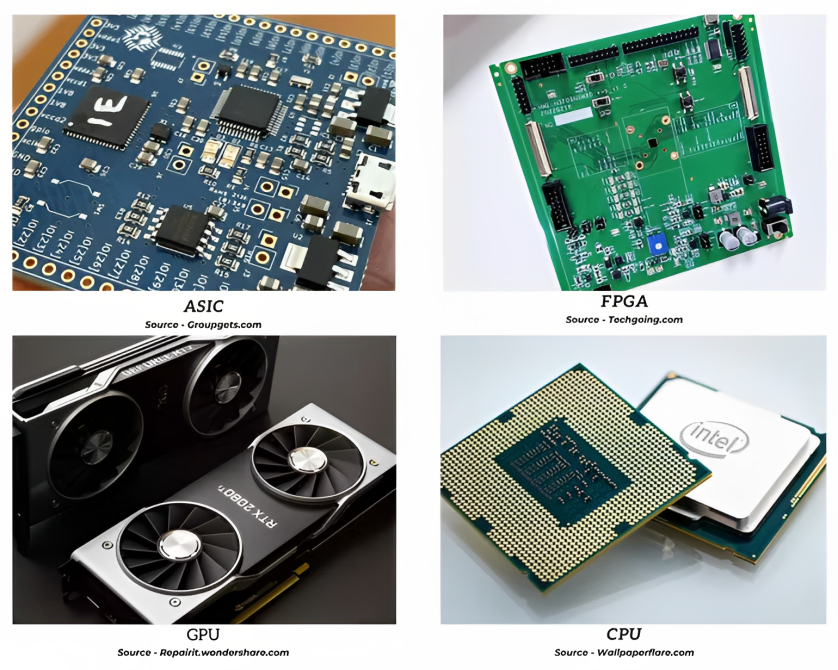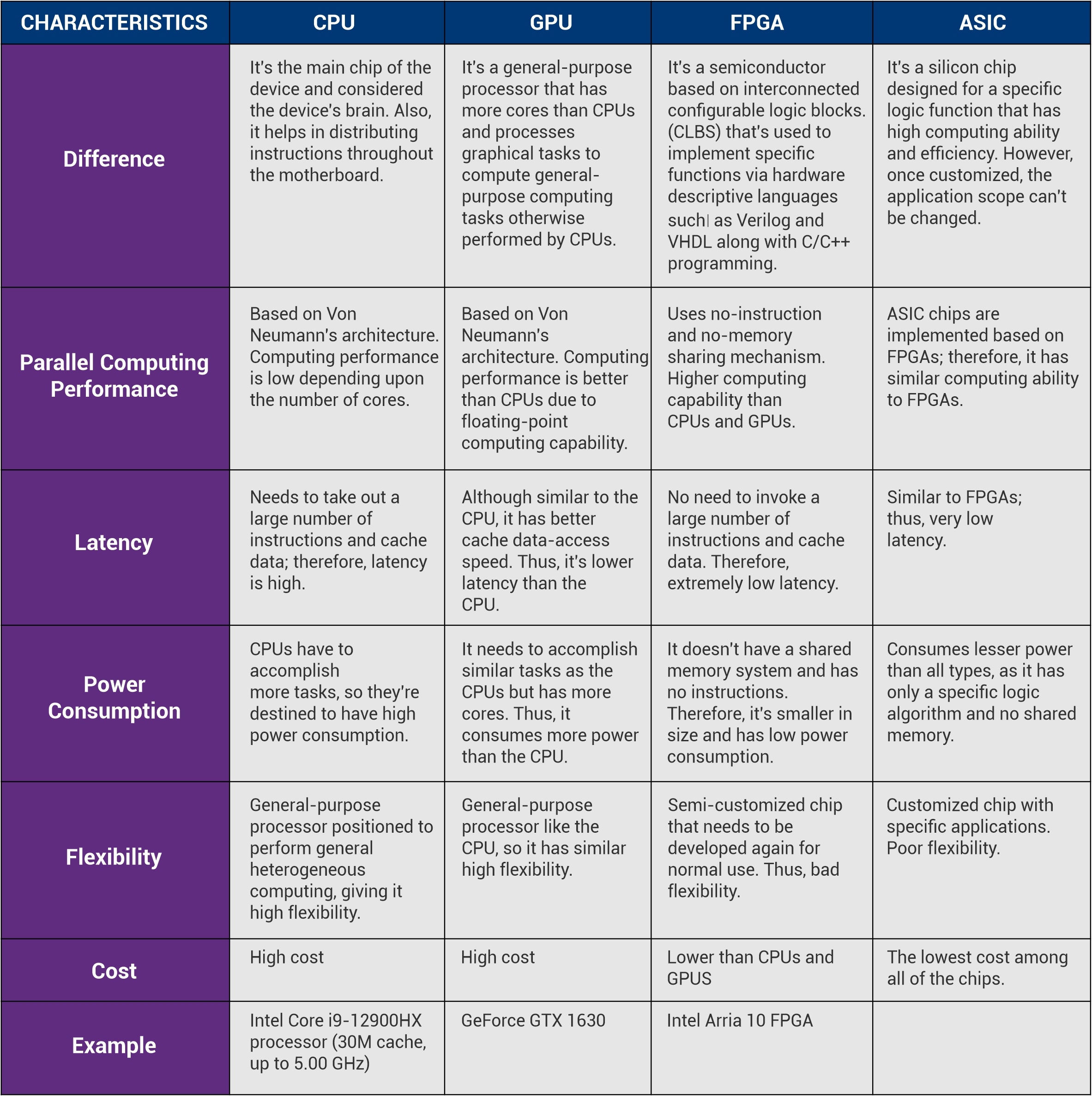
Leading chipmakers are rapidly developing AI chips with advanced architectures and built-in accelerators for deep learning. Stratview Research reports that the AI chips market will soar from USD 10.81 billion in 2021 to USD 127.77 billion by 2028, growing at a strong 42.3% CAGR.
Artificial Intelligence and Machine learning are the next best things that the technology domain has for us. They are finding crucial applications in several areas left, right & center, which is helping them grow unbound. And to aid the growth of this intangible thing, we have something tangible and very real. That is Artificial Intelligence Based Chips or simply AI Chips.
Now in the age of Web 3.0, Artificial Intelligence has become a showstopper. It is gaining attention from every domain. It is seldom now that you are visiting a website and there are no chatbots there, or you buy a phone which has no access to an assistant, these are all powered by AI. To take this up a notch, the production of AI chips with a specific architecture having AI accelerators and the capability of deep learning is being pursued keenly by renowned chipmakers. The growth of AI chips is so overwhelming that according to Stratview Research, the Artificial Intelligence Chips Market is projected to grow from USD 10.81 billion in 2021 to USD 127.77 billion by 2028 at a CAGR of around 42.30%.

Fig. 1 : Artificial Intelligence Chips Market Forecast
So, What Are These Chips, and Why Do We Need Them?
What Are AI Chips?
Artificial Intelligence chips are those pieces of hardware that have a very specific architecture to support deep learning-based applications through AI acceleration powered by specially integrated accelerators. They are in demand because of their special ability to turn data into information and make that information into knowledge to work upon. Also, they function through several computer commands and algorithms that help them initiate activity and brain structure.
To understand more, we have to look into deep learning.
What is Deep Learning?
Deep learning is a part of machine learning that has exceptional AI applications and is also known as DNN (Deep Neural Network) or ANN (Active Neural Network). DNN learns from the already available data during the training phase and can make predictions from new data later. DNN makes it easier for the chips to collect, analyze and interpret large amounts of data in a very short span of time.
Why Do We Need Them?
It all started when the CPUs (Central Processing Units) helped the proliferation of personal computers. It was the brain of the computer and performed basic arithmetic, logic, and control operations for the computer. However, gradually came the need for processing real-time 3D images, for which the CPU was just not quick enough. And there came GPU or Graphical Processing units on the technological scene. GPU replaced the CPU and fulfilled the demands of the general populace for quick and efficient 3D Image processing.
It is said that History repeats itself and that is what is precisely happening. Now the time for the quick processing of AI applications has come knocking. And although GPUs can process AI applications better than CPUs, they are not perfect. They can execute AI models, but they are fundamentally optimized for processing graphical models and not neural networks, making a demand for the AI PU (Artificial Intelligence Processing Unit) all the more significant.
AI PU acts as the AI accelerator on the AI chips and performs the following tasks better than GPUs, making them immensely essential for future AI operations –
- It can accelerate the speed of computation of Machine Learning tasks by nearly 10K times more than the GPUs
- Capable of better resource utilization and is more power efficient when compared to CPUs & GPUs
The AI PU is just one of the components that are present in an AI System on Chip (AI SoC). So, then the question arises, what all are there in an AI Soc?
Components of an AI System on Chip
Neural Processing Unit
NPU, which is also known as AI PU, is the brain on the chip. This is the most important component of the chip, which makes any chip different from the other chips in the market. It has the power to compute data quickly and efficiently with less utilization of power.
Controllers
Controllers are the processors that control the conduction of all the businesses or activities of the chip and keep them in sync with the other components on the chip as well as with the external processor.
SRAM
This part of the chip answers the question of where to store the AI models or intermediate inputs on the chip. Also known as Static Random Access Memory, it is that section of the chip which can quickly and conveniently store all the models and those models can be accessed in no time when needed. However, there is just one catch, it doesn’t have a large storage space, like the DRAM (Dynamic RAM) outside of the chip.
Input/Output Blocks
I/O blocks on the chip are extremely important for the working of the SoC, as it connects the components on the SoC with the external components such as DRAM and the external processor. These blocks aid in maintaining the flow of data and in keeping the exchange between the external and internal components streamlined.
Interconnect Fabric
Just like I/O is important in maintaining the exchange between internal and external components, interconnect fabric specializes in the connection and exchange between just the components on the AI chip. Now, this part of the chip makes or breaks the efficiency and speed of the chip. It's crucial that it keeps up with the speed of other components and does not create latency which can affect the performance of the chip adversely.
The design of the AI Chips is continuously seeing upgrades, as it is not as perfect as the designs of CPUs and GPUs. However, with the high speed of advancements in this field and innovations almost daily, it will undoubtedly reach the same level soon.
For instance, in 2020, Cerbras, an American artificial intelligence company, announced that they are building wafer chips and launched a new one, CS-2 in 2021, with 850,000 processing cores on it and 2.6 trillion transistors on a single chip. According to Cerebras, this makes the AI chip 10000 times faster than GPU chips. In laymen terms, it means that the AI neural networks that previously took months to train on GPU chips can now train in minutes on the Cerebras system.
So, what makes them so coveted?
Advantages of Artificial Intelligence Chips Over General Hardware
Quicker and Efficient
Artificial intelligence models require faster parallel processing abilities from the chips so that it will aid its overall performance and not act as a bottleneck. AI chips provide parallel processing capability that is ten times more in the ANN applications when compared to traditional semiconductor devices at a similar price.
Also, it is better suited to the heterogenous computing that is required nowadays, with its low power consumption and high performance.
Higher Bandwidth Memory
When we talk about parallel processing capability, the chips are required to allocate more bandwidth of memory for AI models to process smoothly. AI chips are superior in this area to the traditional ones as they allocate 4 to 5 times more bandwidth for computing purposes.
For instance, the newly launched AI chip called NeuRRAM has 48-core RRAM-CIM hardware which is more than 4 times the memory of Intel CPU Core i5-13500, which boasts 10 to 16 cores.
Speaks to New Technological Demands
The new-age AI chips are specially designed to work with AI and machine learning, to develop smarter devices for human use. With multiple processors and their specialized functions, AI chips have an upper hand in dealing with new-age technologies when compared with the traditional ones.
Now, after looking into the benefits of AI chips, let us look into the different types of AI Chips that are generally used.
Different Types of AI Chips
Artificial Chips are of four different types viz. Application-Specific Integrated Circuits (ASICs), Field Programmable Gate Arrays (FPGAs), Central Processing Units (CPUs), and Graphical Processing Units (GPUs). With varieties, come different capabilities.

Fig 2 : Different Types of AI Chips

Table 1 : Comparisons Between CPU, GPU, FPGA AND ASIC
Summary of the Comparison-
Computing Performance - CPU<GPU<FPGA=ASIC.
Latency - ASIC=FPGA<GPU<CPU.
Power Consumption - ASIC<FPGA<CPU<GPU.
Flexibility - ASIC<FPGA<GPU=CPU.
Cost - ASIC<FPGA<CPU<GPU.
AI Chips – Its Applications
- Robotics – With the continuous need for hardware advancements in the state of art robots being made, AI chips are sure to make a world of difference. They can also power applications in computational imaging in drones among other things.
- Wearable Technologies – Wearable technologies are making headways and AI is helping it tremendously. AI assesses the user’s speech patterns, moods and heartbeats and informs the user with warning signals. In addition to this, it also helps the user improve their performance in sports among lots of other things.
- Natural Language Processing (NLP) – The demand for analyzing user-conversations and messages is growing more and more due to the increasing demand for chatbots, assistants, and online messengers such as Whatsapp, Slack et cetera.
- Computer Vision – The use of AI chips for in-vehicle assistance from computers is growing heavily. Major companies like Tesla, Ford, and BMW are banking on the security aspect by aiding the driver using Artificial Intelligence. Autonomous cars are being tested all around which learns driving through the combination of AI & Machine Learning. These vehicles are for sure the future of transport.
- For example, in May 2022, Intel announced that it has leveraged Habana’s AI chips to train self-driving cars.
- Retail – Apart from the security systems at shopping malls, it helps retail market with material storing, shelf management, storage management and transport.
- Healthcare – Assessing & monitoring patients’ health forms a big part of treatments for patients. AI warns the healthcare workers about the deterioration of a patient’s health, so that no time should be wasted in providing proper treatment.
These are some of the many applications that AI chips find themselves with.
Way Ahead
AI has unleashed such potential in the technology sector that was never known before to humankind and now to tap into this potential without any bottlenecks, these AI chips are a must. Knowing this, the market is now moving towards adopting neuromorphic chips in high-performing industries such as the automotive industry. Major players like Intel and Nvidia are vying for a larger share of the neuromorphic chips market, making neuromorphic computing the next best thing.
For example, in Oct 2021, Intel launched its 2nd generation neuromorphic chip, Loihi 2, and an open-source software framework, Lava, intending to drive innovation in neuromorphic computing, leading to its better adoption.
In addition to this, AI chips are also being heavily coveted by the automation industry, making it the secret sauce for them to build smart homes and smart cities. This is proving the extremely crucial point that,
Artificial Intelligence chips are indeed going to make the world a smarter place.
Authored by Stratview Research. Also published on – Electronic Design
